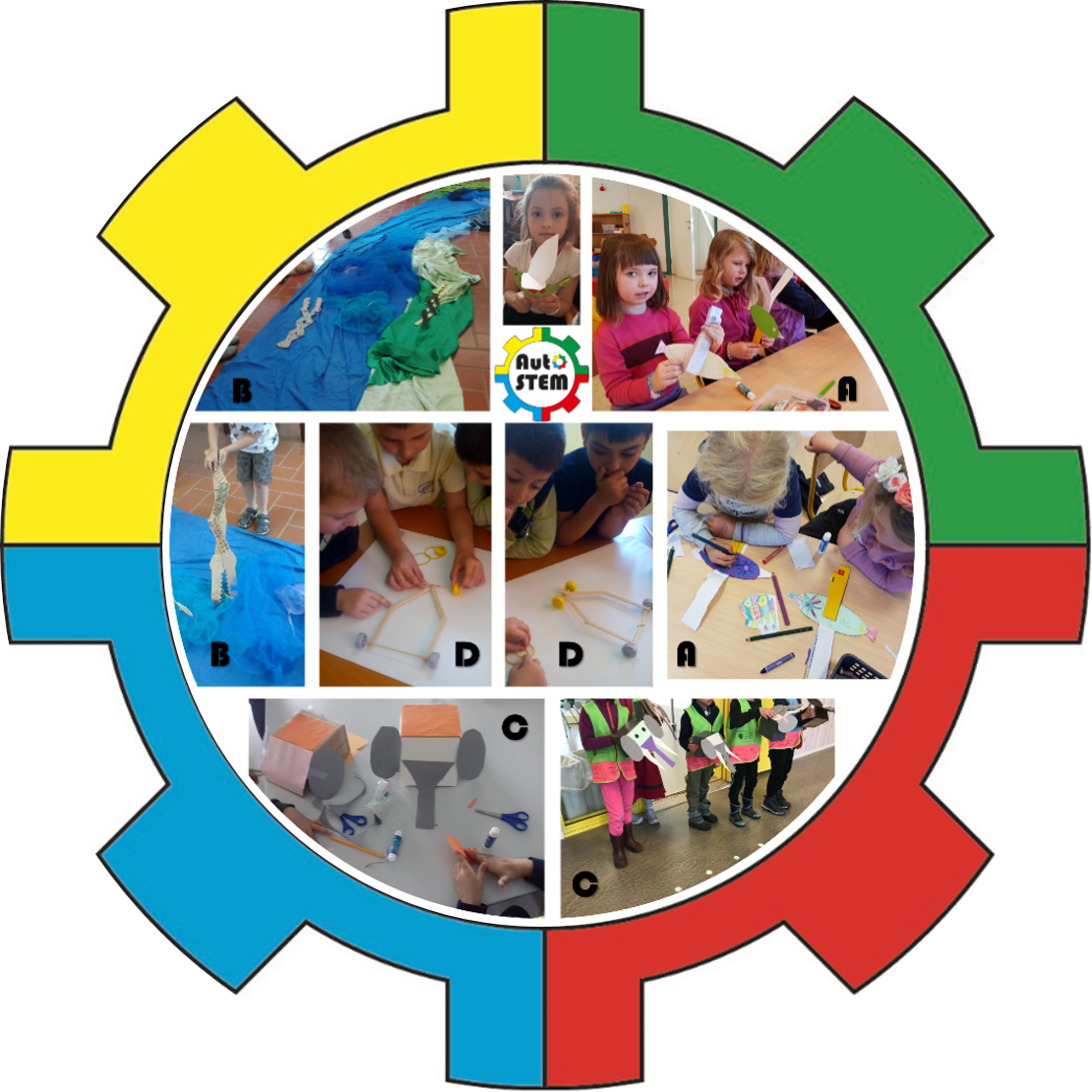Introduction
This section is focused on the engagement and motivation which is evident in the AutoSTEM Erasmus+ project workshops. Since the STEM areas are so important nowadays, and still are areas that are a challenge to teach in the early years of schooling, it is important to understand how to increase the engagement and motivation of children in the learning process. Thus, it is important both to know these concepts as well as strategies to promote them.
We will answer the following questions:
- What are the dimensions and main characteristics of engagement and motivation, in particularly, intrinsic motivation?
- Which is the potential of AutoSTEM pedagogical approach to promote motivation for STEM?
- Which evidences of engagement emerged when children participated in AutoSTEM workshops?
In this section it will be presented several resources that allow you to develop this knowledge about these two concepts. You can find videos, images and examples and furthermore some tasks to test this knowledge.
Learning Outcomes
In this module, you will learn:
- to characterize engagement and motivation.
- to recognize the intrinsic motivation dimensions that may raise.
- to recognize the dimensions of engagement that can have an impact in the learning process.
- to identify strategies used by the AutoSTEM Erasmus+ project to promote engagement and motivation among students.
Engagement & intrinsic motivation
The importance of engagement and Intrinsic motivation a for the learning process highlights the need to understand the dimensions that characterize them and strategies for its promotion.
The concept of intrinsic motivation can take on dimensions related to autonomy, interest, sense of competence, stress, perception of value, among others, and complex and subtle dynamics between these various dimensions (Deci and Ryan, 2000).
On the other hand, engagement can assume several dimensions, as affective, behavioural and cognitive, that also can have an impact (Veiga et al., 2012). The affective dimension is related to the child’s emotional experiences during the learning process; the behavioural dimension is related to the child’s effective behavioural participation in their learning process; finally, the cognitive dimension concerns the child’s mental orientation during learning (Gonçalves, 2017).
The characteristics of the automata, namely the fact that they consist of two parts, on the one hand, a narrative, on the other hand, a mechanism, allow, in a playful approach, activities related to the planning and construction of the referred toys to enhance the interest and engagement in the aforementioned STEM areas, namely in terms of knowledge and construction of simple mechanisms, understanding of their functioning and/or the narrative they represent, and skills such as observation, problem-solving and creativity.
Case study Children’s engagement and learning in “moving toys” workshops in primary school
The case study analyses children’s engagement and motivation in AutoSTEM project workshops. It is published in the International Journal of Developmental and Educational Psychology
Santos, A., Vaz Rebelo, P., Thiel, O., Bidarra, G., Alferes, V., Almeida, J., Barreira, C., Machado, I., Rabaça, F., Dias, M., Pereira, P., Catré, N., Ferrini, F., Bartolleti, C., Josephson, J., & Kostova, N. (2020). Children’s engagement and learning in ‘moving toys’ workshops in the 1st cycle of schooling. International Journal of Developmental and Educational Psychology., 2(1), 115-124. DOI: http://www.infad.eu/RevistaINFAD/OJS/index.php/IJODAEP/article/view/1820
Reflection
Watch the videos below and reflect on engagement processes by answering the following questions:
- Which behaviours are considered evidence of behavioural engagement?
- When did they happen?
- What did the children do?
- Identify evidence of affective and cognitive engagement.
- When did they happen?
- What did the children do?
When planning your own automata, take into account factors that are associated with engagement and intrinsic motivation. When Implementing your own AutoSTEM activity, register indicators of engagement and intrinsic motivation that may take place.
Quiz
References
Campbell, F. A., Pungello, E. P., Miller-Johnson, S., Burchinal, M. & Ramey, C. T. (2001). The development of cognitive and academic abilities: Growth curves from an early childhood educational experiment. Developmental Psychology, 37(2), 231-242. DOI:10.1037//012-1649.37.2.231.
Gonçalves, S. S. B. (2018). Envolvimento do aluno na escola, perceção de apoio familiar e desempenho escolar. Mestrado em Psicologia da Educação. Universidade da Madeira.
Ryan, R. M., & Deci, E. L. (2000). Intrinsic and extrinsic motivations: Classic definitions and new directions. Contemporary educational psychology, 25(1), 54-67.
Veiga, F., Galvão, D., Pereira, T., Caldeira, S., Bahia, S., Melo, M., Conboy, J. Nogueira, J., Janeiro, I., Festas, I. M., Taveira, M. C., Carvalho, C., Almeida, A. (2012) Student’s engagement in school: a literature review, ICERI2012 Proceedings, pp. 1336-1344. https://repositorio.ul.pt/bitstream/10451/7582/1/Students%20Engagement%20in%20School%20A%20literature%20review.pdf


